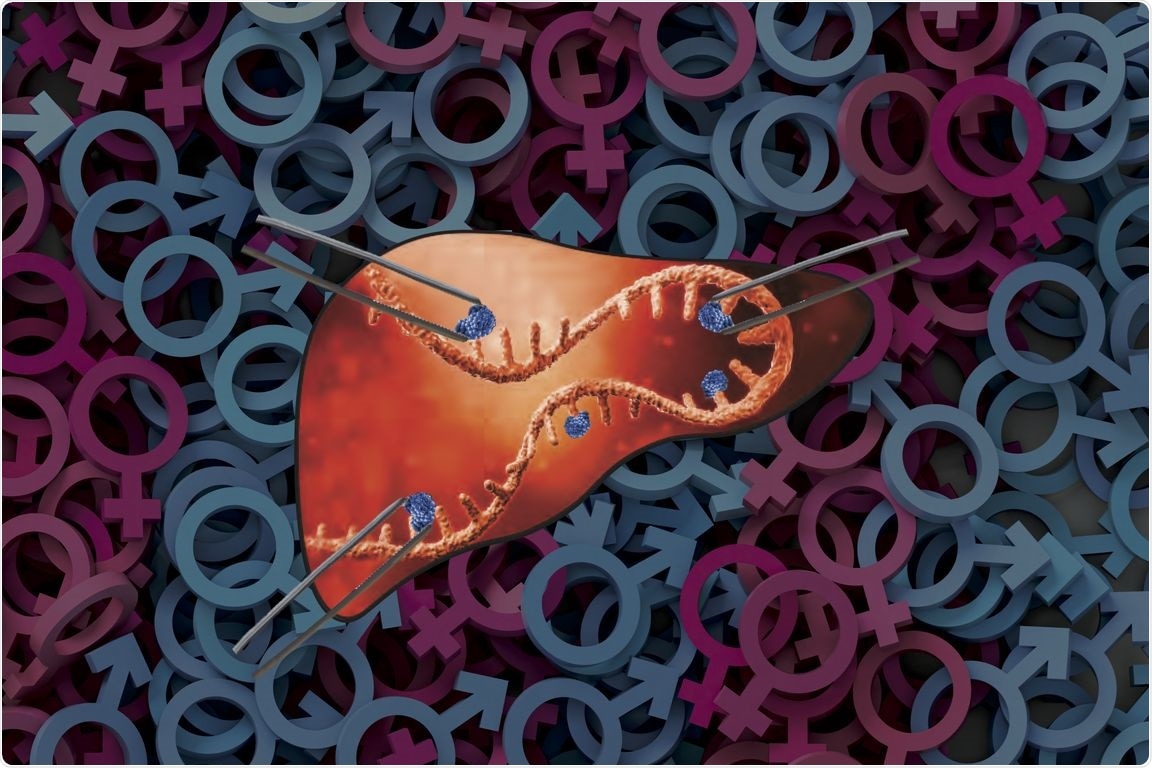A new study by researchers from the University of California, Los Angeles (UCLA) found that a chemical change occurring in certain RNA molecules while carrying genetic instructions from DNA to the protein-making machinery of cells could help guard against non-alcoholic fatty liver.

Schematic representation of m6A modifications (blue) attaching to RNA in the liver. Image Credit: Sallam Lab/UCLA.
Non-alcoholic fatty liver is a condition caused by the accumulation of fat in the liver and can result in advanced liver disease.
Conducted in mice, the study also proposes that this change—called m6A where a methyl group binds to an RNA chain—could occur at a different rate in females compared to males. This explains why females tend to have higher fat content in the liver. The study identified that in the absence of m6A modification, there was a drastic reduction in variations in the liver fat content based on sex.
Moreover, the team used a preclinical model to show that gene therapy can be employed to improve or modify key RNAs to slow down or minimize liver disease severity.
Background
Fatty liver can develop when liver fat content increases due to dietary or genetic factors, potentially leading to advanced liver scarring and disease, as seen in cirrhosis and other conditions. High liver fat content is related to a higher risk of cardiovascular disease.
Scientists recently found hundreds of chemical changes like m6A that can occur in RNA molecules and modify the RNA’s instructions for making proteins without any impact on the core DNA. Certain changes could be beneficial, for example, in liver disease; others could have an adverse effect.
Method
The researchers used a unique mouse model in which the m6A RNA modifications in the liver were absent and a control model with the modifications to compare the effects of diets with varying fat contents to evaluate the effects of the changes on fatty liver disease.
Moreover, measurements from patients who had undergone liver biopsies as part of bariatric surgery were used to correlate markers of m6A RNA modifications with liver fat content and inflammation.
Impact
A key question looking ahead is how environmental and genetic factors influence the body’s natural ability to make RNA modifications. Since m6A seems to serve as a protective checkpoint that slows down the fat buildup in the liver, the researchers believe their findings will increase future studies on the development of therapies to improve chemical modifications that can safeguard against liver disease and similar disorders.
Source:
Journal reference:
Salisbury, D. A., et al. (2021) Transcriptional regulation of N6-methyladenosine orchestrates sex-dimorphic metabolic traits. Nature Metabolism. doi.org/10.1038/s42255-021-00427-2.